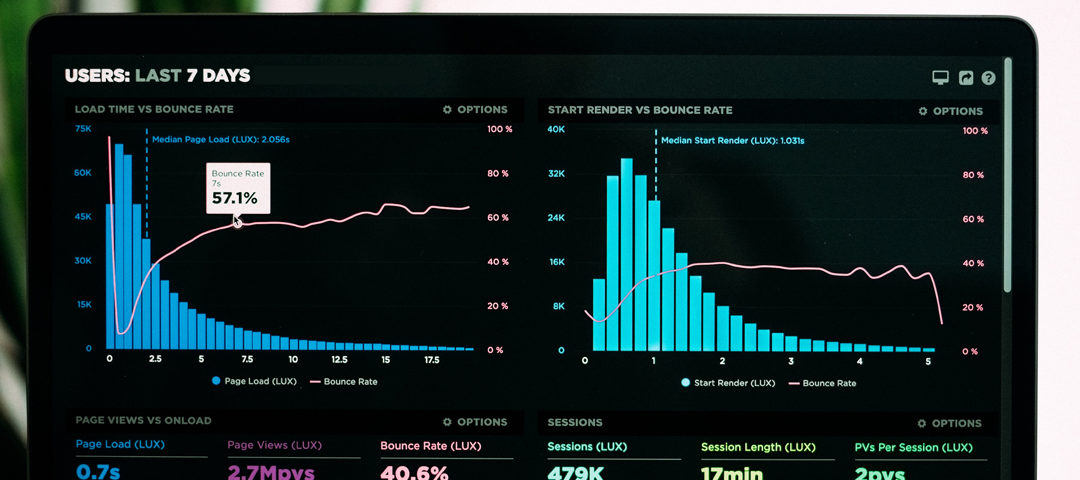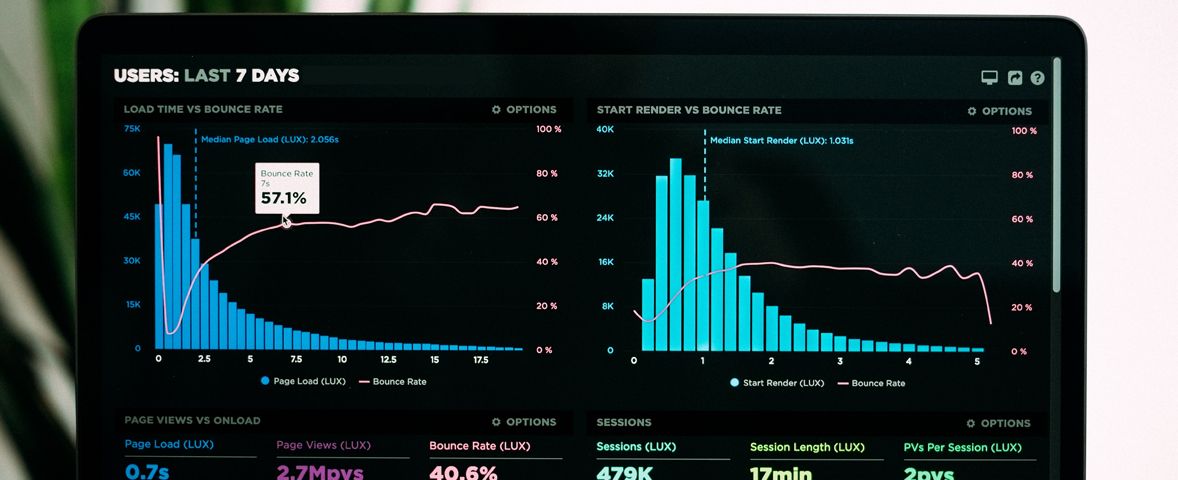Marketing as a small business presents several challenges. Between budgetary constraints and a lack of clarity about the right ways to market a business, it’s no wonder that marketing is often a small businesses least favorite business function. But it’s probably the most important. It’s crucial to maintain an ongoing marketing and lead generation strategy to yield beneficial outcomes for your brand.

7 Marketing Metrics You Should be Tracking in 2021
7 Marketing Metrics You Should be Tracking in 2021
Don’t waste time on meaningless metrics. Learn how your company can measure goals and track performance with these KPIs.

Use Data to Run More Effective Campaigns 
Marketing metrics are more accessible than they have ever been, taking most of the guesswork out of how well your campaigns performed. But it can also be very easy to lose yourself in the amount of data that you encounter.
Mastering digital marketing has changed. It used to be about discovering certain marketing metrics that could be measured. Now it is about focusing on the metrics that matter the most.
Of the dozens of marketing metrics that you can track, there are seven that not only matter tremendously but also fall in line with the inbound marketing approach that we follow. The goal of inbound marketing is to generate more leads through your website which can place you in control of the sales cycle, allowing you to pursue stronger partnerships with potential clients.
Once you have a good handle on these seven metrics, your organization will run more effective campaigns. You’ll find that your internet visibility is stronger, and your expertise is in much higher demand.
Here are seven marketing metrics that you should be tracking and improving.
Website Visits and Traffic Sources
Visits to your website is a very simple metric to track, and often the most important. Traffic is one of the best indicators of not only how effective your message is, but also how responsive your target market is.
In fact, a lot of the metrics we’ll be exploring revolves around traffic. Website traffic can be grouped into four main groups: Direct, Organic, Referral and Paid.
Direct Traffic
These are visits that come from anyone who directly enters in the URL of your website or social page into a browser.
Direct traffic is also generated by those who click on a bookmark or a link that was put into an email, a comment, or in a chat room.
Organic (Search) Traffic
This kind of traffic typically comes from search results that are not the result of a paid ad. Organic traffic is a direct result of the search engine optimization efforts of the content on your website or social media page.
Referral Traffic
Referral traffic is traffic that comes from third party websites. Like organic and direct traffic, referral traffic is not the result of a paid ad. Instead, it is the result of links from press releases, guest posts, business directories, or other social media pages.
Paid Traffic
When someone arrives at your website by way of an advertisement, it is known as paid traffic. In order to get the most out of paid traffic, you’ll want to set up proper analytics software so that this particular kind of traffic is tracked the right way.
All four forms of traffic should be tracked regularly, but the two kinds that you should prioritize the most are organic traffic and direct traffic since they are strong indicators of credibility with search enginges and existing clients.
Pro Tip: Use your existing data in Google Analytics to create a baseline. Understanding your baseline is critical to developing an effective marketing strategy.
Ready to take action? Let’s have a conversation.
Time Spent on Site
Tracking how much time visitors spend on your website is just as important as monitoring the kinds of traffic your website gets.
In fact, time spent on a website can tell you the story of how effective any given marketing campaign truly is.
Take paid advertising, for example. If visitors to your website navigate away from it seconds after clicking on the advertisement, what does that say about your paid advertising campaign?
Increasing the visitors spend on your website or social media pages begins with making sure your strategy focuses on the pain points of any given buyer as well as content that addresses any challenges they may have.
Speaking of content, original content that has high value will not only get visitors to stay on a website for longer, it will also demonstrate to search engines how relevant your website is in any given industry.
Bounce Rate
When somebody has visited your website and navigates away from it without any kind of interaction, such as following a different link on your website or adding something to the shopping cart, they have “bounced” from your website.
Like with time spent on a website, this bounce rate will determine not only how effective your marketing campaigns are, but it will also determine how much value the content on your website provides.
If this rate is anything higher than 60%, you’ll probably need to make some serious adjustments to how your website looks, the message it is trying to send, and perhaps some of your CTA dialogue.
One of the most effective ways to reduce bounce rates is to align the content of your campaigns with your landing pages, as well as addressing one or two major pain points of those who visit your website. This will not happen overnight and you are only going to see noticeable results if you make systematic adjustments to this over time.
Pages Ranked
Overall website success will always be related to search rankings. The number of pages you rank for will represent the number of opportunities for your potential customers to discover your website.
Ideally, you want all the different pages you have on your site to rank high. Google Search Console is a free tool that can track this for you in a general way, or you can upgrade to a paid tool if you want even better insight. Some of the paid tools also show you how your competitors are ranking.
Leads Generated
It is a common misconception that all visitors to a website is a lead that has been generated. This is not accurate at all. When someone visits your website, they are a potential lead.
Leads can only be generated by a CTA, or a call to action. Specifically, a website visitor needs to follow through on your CTA by entering some information in order to truly be a lead.
Determining the leads that have been generated per CTA in your content is one of the most useful of these marketing metrics, if not the most useful.
Like micromanaging your bounce rate, optimizing these leads to where you generate perfectly qualified leads does not happen overnight and will take time. Testing different CTAs is the best way to optimize leads.
Conversion Rate
Just like you need to know how many leads your CTAs are generating, you also need to know how many visitors to your website complete a desired goal out of the total number of visitors. This is known as a conversion rate.
A high conversion rate is ideal. Traffic doesn’t mean much if it doesn’t convert into leads who could possibly benefit from your services.
You can think of a conversion rate as a journey that a buyer takes that leads them to pursuing the products or services on your website.
There are three general phases that involve a different conversion rate for each. They are:
- Awareness phase: This is when a buyer encounters the sales page.
- Consideration phase: This is when a buyer moves from the sales page to adding items to the cart.
- Decision phase: This is where a buyer enters payment information, physically ordering products or services.
Just like there is a conversion rate for these three, there is also an opposing bounce rate for these. You will want to measure these against each other. Only then can you alter strategies and campaigns to improve conversions.
Return on Investment (ROI)
Probably one of the most important metrics to measure is ROI because it shows you how effective your campaigns are.
ROI is best expressed in a percentage. For example, a $1000 investment that generated $1200 in revenue would have an ROI of 20% since 1200 is 20% greater than 1000.
Determine your target ROI during planning and strategy conversions. Then work backward to further define the resources required to achieve this goal. Consider all of the resources you have at your disposal when doing this with the understanding that successful marketing campaigns take time it achieve your targeted ROI.
Next Steps for Your Marketing Team
Digital marketing strategies are a marathon, not a sprint.
This is why you should keep a close eye on these metrics and make adjustments as you go along. The same principles of traditional marketing apply to web-based marketing campaigns. You need to build trust and authority with your digital audience, using these metrics as indicators of your progress.
Hopefully the tips above will help improve website conversions. Have more questions about running successful marketing campaigns? Reach out to us directly.
Editor’s Note: This article was updated in September 2021
Read 
More Articles.
Read 
More Articles.
Writing High-Impact B2B Case Studies
7 Common Marketing Challenges + How to Solve Them
Marketing as a small business presents several challenges. Between budgetary constraints and a lack of clarity about the right ways to market a business, it’s no wonder that marketing is often a small businesses least favorite business function. But it’s probably the most important. It’s crucial to maintain an ongoing marketing and lead generation strategy to yield beneficial outcomes for your brand.
7 Things to Look for in an Outsourced Marketing Team
Outsourcing your marketing is one of the best decisions you can make for your small business. Traditional in-house marketing teams are a great solution for larger organizations that have the resources available to employee experts in the 10+ roles that it takes to run an effective department.
Subscribe to Get The Latest Insights. 
What makes marketing so challenging?
Trying to keep-up with the tools, technology and the limited attention span of your target market are all challenging. Get our tips on how to grow leads and revenue, delivered directly to your inbox.








Recent Comments